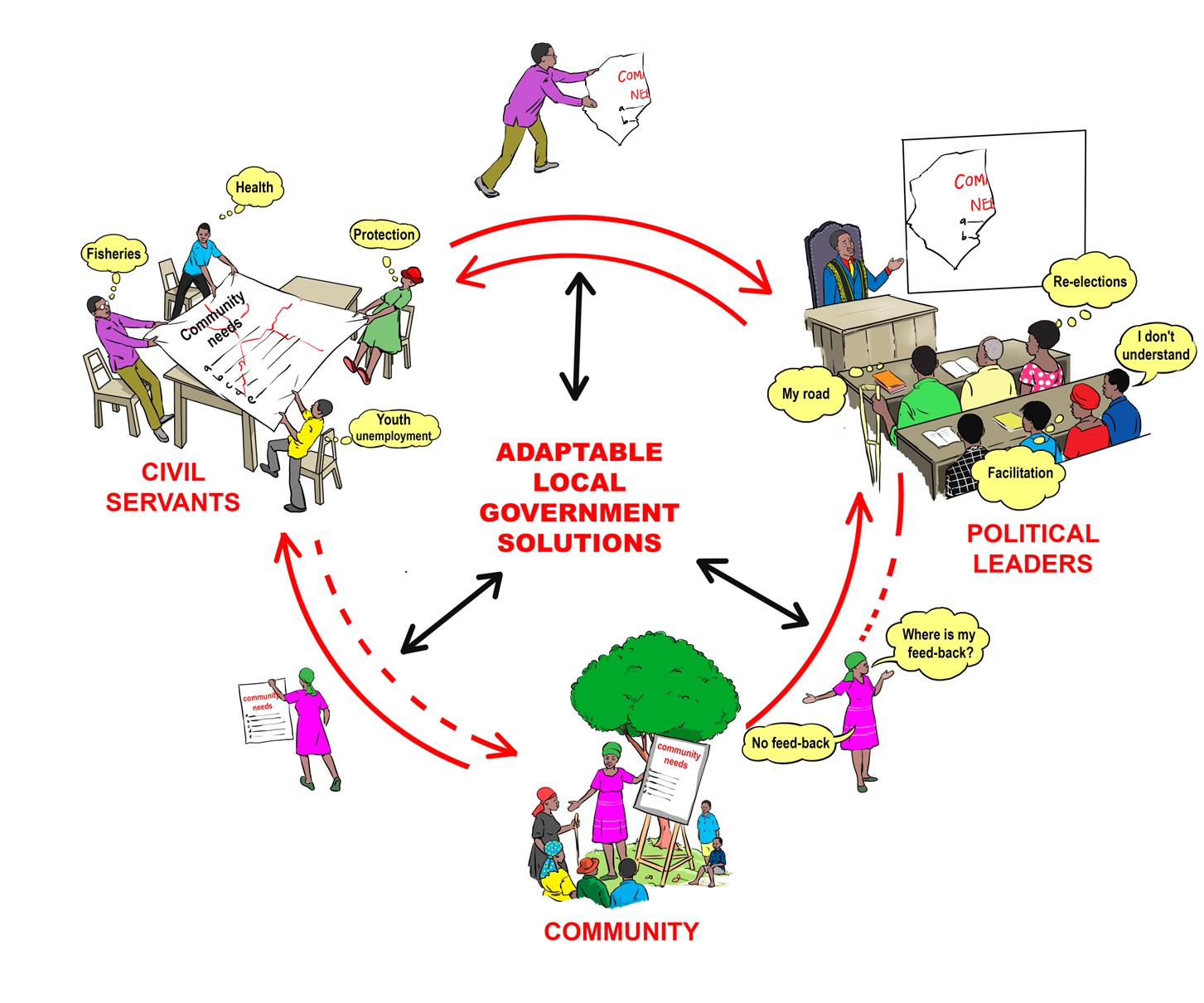Security and Rule of Law
In an ideal local government setting, the needs of the community are presented and documented at community level using a “bottom-up approach”. These needs are then translated into a local government development plan by the technical staff. The political leadership at the District/Municipal Council, not only approve the plan but also provide oversight on its implementation. They constantly engage with the communities that voted them in power to provide feedback and receive feedback on implementation of the plan. In such an ideal process, communication is continuous, communities are fully engaged, and well represented to ensure that all voices are heard. Efforts are made to integrate the priorities and concerns of all segments of the community in the development plan, including the private sector, youth, women, PWDs and other stakeholders. The feedback on issues presented at every stage of the process is treated with the concern it deserves and the LG technical staff and politicians are available to take responsibility and respond to concerns raised. This constant feedback and engagement allows the LGs to devise adaptable solutions together with the communities in the course of implementing the development plan. However, a number of challenges are faced at each stage of the process including weak engagement platforms, underrepresentation of community groups and stakeholders, limited joint planning, coordination and implementation by technical staff and limited comprehension of their roles and responsibilities by leaders. As a result, there is a general lack of clarity and focus in the leadership of the targeted LGs to address service needs and steer development. While the LG mandate allows for actions to be taken, it is leadership which can make the difference when discretionary space is taken up and fully utilized.


